A data-centric economy is evolving. The Samsung Galaxy Note 9 debuted with 8 GB RAM and one terabyte (TB) of storage (purchasing a 512 GB SD card bumps it to 1 TB). The price tag is well over $1,000, so the rest of us will have to buy 1 TB of cloud storage from Google for $10/month to unload the 700 feature films or 500,000 photos that we collect in everyday life. (Note that 1 TB is 1,000 GB and that these are estimates).
Google Play Store was launched in 2008. By March of 2018, the Google Play Store offered 2.8 million apps.[i] NAND flash memory hit a wall with planar NAND storage a while back. In a recent newsletter, Yole Développement stated, “In the last two years, the DRAM and NAND memory business hit record-high revenues. The industry announced an impressive 32% CAGR between 2016 and 2018, with revenue growing from US$ 77 billion to an estimated US$ 177 billion.”[ii] The hardware drivers of DRAM and NAND flash memory are servers, graphics cards, and mobile devices. Much of the technology driving the surge in memory is the Internet of Things (IoT), Artificial Intelligence (AI), autonomous vehicles, personal computers (which are switching from mechanical to solid-state drives), and mobile and other cloud-connected devices. Samsung is the largest provider of memory in the world if you look at the numbers that Yole Développement discloses (see Figure 1).
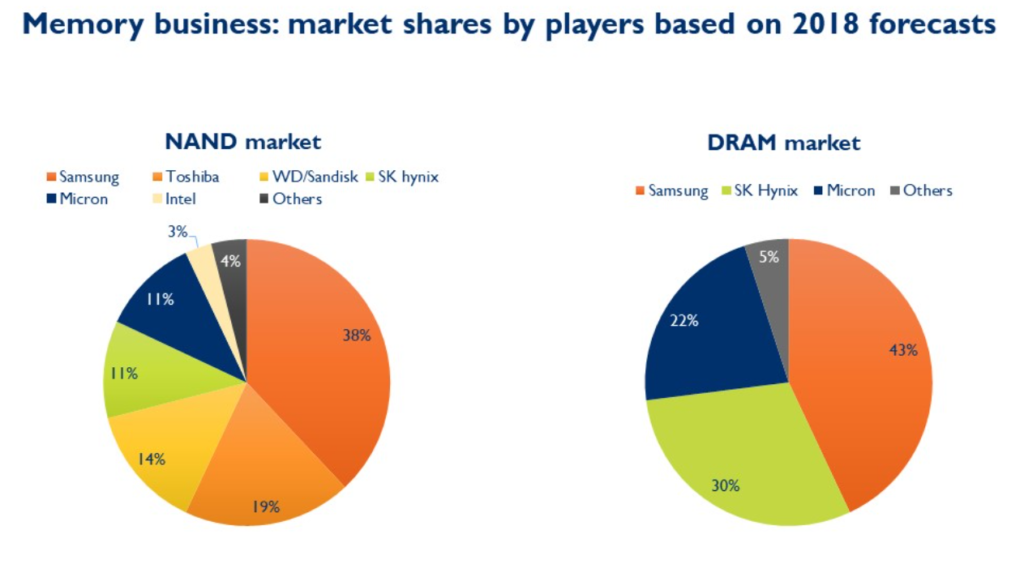
What is 3D NAND?
Overall, 3D NAND has lowered the cost per bit and has improved performance over flat, or “planar” flash memory. In the United States, it is Micron Corporation that has the largest market share of 3D NAND. According to Micron, “Planar NAND flash memory is nearing its practical scaling limits, which poses challenges for the memory industry. Industry innovation requires state-of-the-art NAND technology that scales with higher densities and lower cost per bit.” 3D NAND has significantly improved flash density as well as lowered the price of NAND flash. Indeed, a recent downturn in memory prices has created an oversupply bubble, reducing prices for the near future. Lower cost translates to an acceleration in personal computers converting from Hard Disk Drives (HDDs) to Solid State Drives (SSDs).
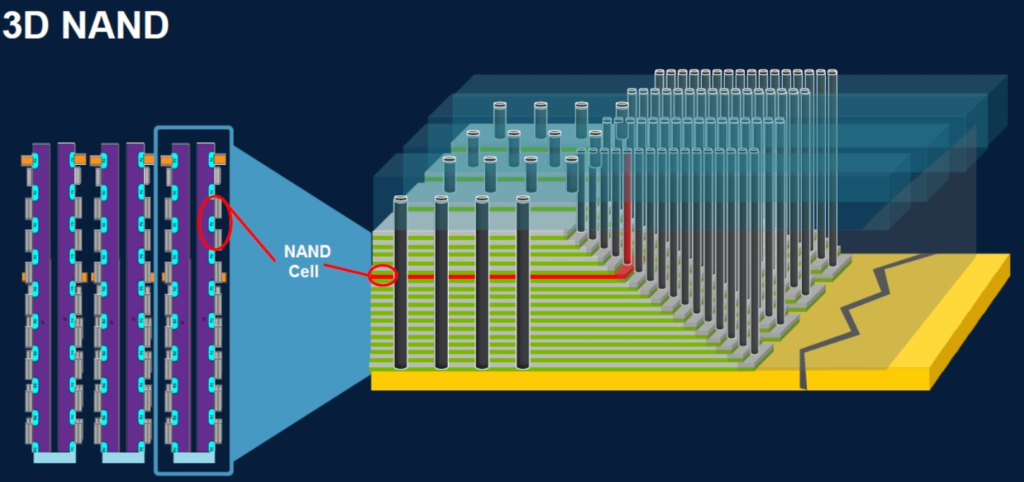
Both Micron and Intel developed the 3D NAND memory technology that Micron produces. Micron posits that 3D NAND is more cost-efficient than planar NAND, improved latency, increased endurance, and has three times more capacity than planar NAND. 3D NAND is a skyscraper compared to planar NAND, stacking flash cells vertically in multiple layers. The number of layers has progressed from 32 layers to 64 layers, with the most recent 3D NAND production at 96 layers. You can expect the numbers of layers to increase.
However, more layers are more time-consuming and challenging to accomplish. Scaling to more layers is slowing down, and the memory industry will need to innovate new materials innovation to scale further on both DRAM and 3D NAND. Again, from Yole, “From a technological perspective, it continues to get more and more difficult to grow bit output on the wafer, which is a key for driving down the cost per bit for both DRAM and NAND. The former is constrained by lithography shrinks, while the latter is constrained by limits on 3D stacking and wafer throughput losses as wafer processing time has increased significantly due to the transition from planar (2D) to 3D NAND.” ii
To give you a little perspective, 3D NAND makes possible SSDs with more than 3.5 TB of storage that are no larger than a stick of gum. Standard 2.5-inch SSDs can hold more than 10TB of data.[iii]
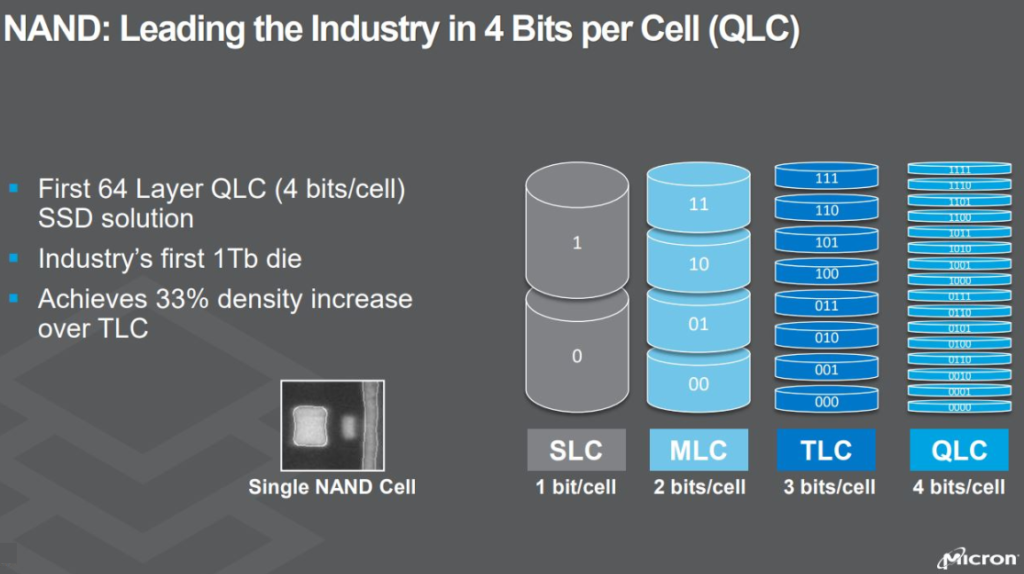
[i] https://www.statista.com/statistics/266210/number-of-available-applications-in-the-google-play-store/
[ii] https://www.i-micronews.com/memory/12671-memory-business-what-s-next-interview-by-yole-developpement.html
[iii] http://investors.micron.com/news-releases/news-release-details/micron-and-intel-unveil-new-3d-nand-flash-memory
[iv] https://www.micron.com/about/blogs/2018/may/were-flexing-our-quads-introducing-the-worlds-first-qlc-solid-state-drive
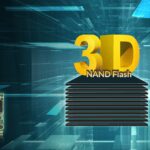

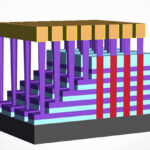

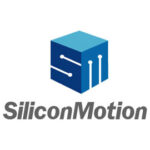
Leave a Reply